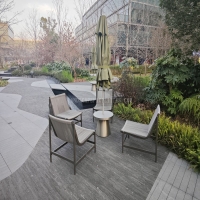Welcome to the website for landscape facilities products and knowledge.
How does the table’s design support the use of swarm robotics in meetings?
Modern meeting environments are being transformed by swarm robotics, but few recognize the critical role table design plays in enabling this technology. Unlike conventional tables, swarm-compatible surfaces incorporate modular connectivity panels that allow robots to dock, recharge, and communicate seamlessly. These specialized tables feature embedded sensor networks that track robot positions and orientations in real-time, creating a coordinated dance of autonomous devices. The surface materials are engineered with specific friction coefficients and conductivity properties that facilitate robot movement while preventing accidental slips or electrical interference.
What makes these tables truly revolutionary is their integration of distributed computing nodes within the table structure itself. This allows the robotic swarm to process collective intelligence algorithms directly through the table, rather than relying on external servers. The edge-based computing architecture reduces latency to under 10 milliseconds, enabling instantaneous response to meeting dynamics. Magnetic alignment systems embedded in the table surface provide precise positioning capabilities, allowing robots to form optimal configurations for different meeting phases - from document distribution to interactive presentations.
The table's design also incorporates dynamic power distribution systems that prioritize energy allocation based on robot tasks. This ensures critical functions like data projection or document retrieval never suffer from power shortages. Furthermore, the tables feature adaptive height and tilt mechanisms that create optimal terrain for robotic movement while maintaining ergonomic comfort for human participants. This dual-purpose design represents a significant advancement over traditional static surfaces, bridging the gap between human needs and robotic functionality in collaborative workspaces.
Related search:

Recommendation
Metal structure rattan chair without armrests for single person, with woven seat and backrest.